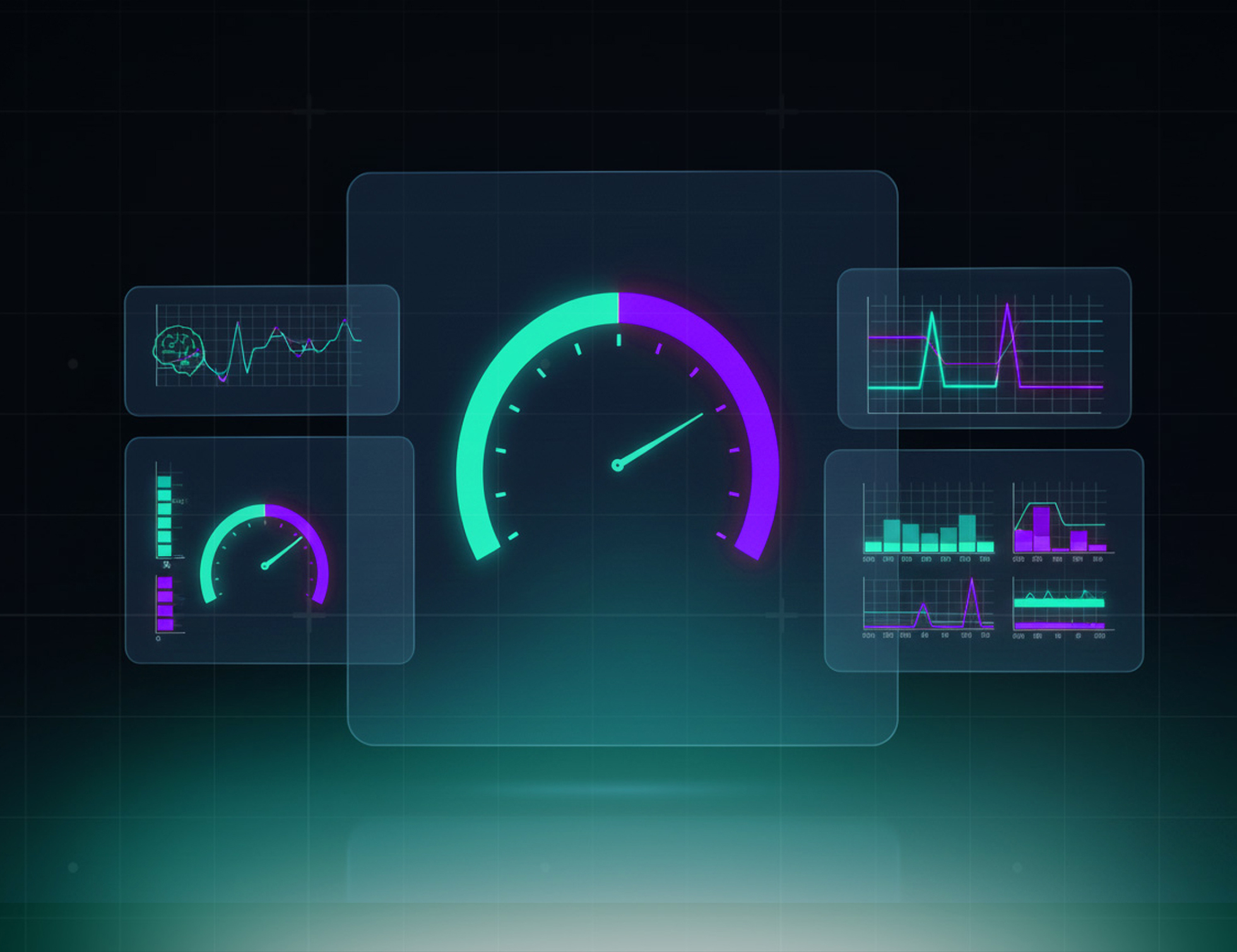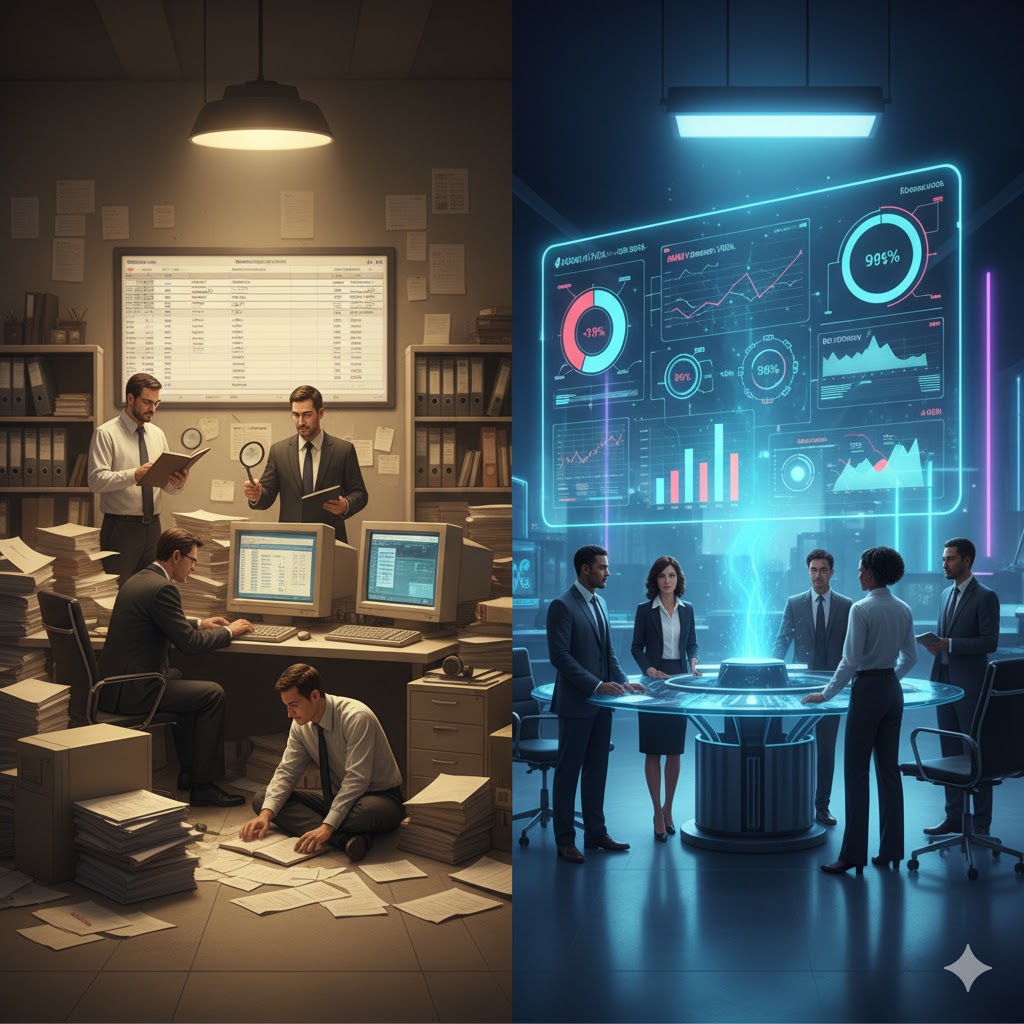From Manual Reporting to Real-Time AI Dashboards: How Businesses Decide Faster

From Manual Reporting to Real-Time AI Dashboards: How Businesses Decide Faster
The way businesses make decisions has always been shaped by the information they have at hand. During World Space Week, we remember how decades of research and vision led humankind to take its first giant leap into space. That same curiosity drives companies today — but unlike the space race, where results took years, innovation in business can happen instantly.
With real-time AI dashboards, organizations no longer depend on static, manual reports that arrive too late. Instead, they access live insights that empower faster, smarter, and more resilient decision-making. In today’s competitive landscape, where AI process automation and intelligent process automation are already mainstream, visibility and speed are not optional — they are a competitive advantage.
Lessons from space: vision, resilience, and curiosity
In 1961, Yuri Gagarin became the first human to orbit Earth. By 1969, the Apollo 11 mission landed astronauts on the Moon. These milestones were not achieved overnight; they were the result of decades of collaboration, testing, and the relentless curiosity to go beyond.
Business innovation follows the same principle. Great leaps require vision and perseverance. But unlike the space race, companies today don’t need decades to see the impact of technology. Artificial intelligence is already here, embedded in daily operations — from AI-powered chatbots for business to predictive analytics tools in finance, healthcare, and retail.

The new frontier: AI in everyday business
AI is no longer a futuristic concept. According to McKinsey’s 2023 report, more than 50% of companies already use AI in at least one business function. Gartner projects that by 2026, 80% of executives will integrate generative AI into their operations.
Examples abound:
- Banks detect fraud in real time using AI fraud detection.
- Retailers deliver personalized shopping journeys with AI personalization in e-commerce.
- Hospitals optimize patient flow with AI in healthcare operations, improving triage and diagnostics.
This shows that AI is not an add-on, but part of the customer experience (CX) and operational backbone. And one of the most impactful ways this is happening today is through real-time AI dashboards.
From manual reporting to real-time decision-making
Traditional reporting processes are manual, slow, and disconnected. Teams often spend days consolidating spreadsheets before decisions can be made. By then, opportunities are lost.
With real-time AI dashboards, the story changes:
- 📊 Data streams update instantly, offering live visibility into KPIs.
- 🔍 Leaders can detect anomalies immediately using AI-driven anomaly detection.
- ⚡ Strategic actions are taken faster, supported by reliable insights.
For example, in logistics, a real-time business analytics dashboard can alert managers to delivery delays as they happen, enabling immediate rerouting. In healthcare, a hospital can monitor patient admissions in real time and allocate staff accordingly.
This is where Kenility’s AI Business Transformation solutions add value: by building dashboards and automations that allow companies to move from reactive to proactive decision-making.

Practical applications aligned with Kenility’s offering
1. AI Business Transformation
- Process automation: Automating repetitive workflows reduces costs by up to 30% (Deloitte, 2024).
- Real-time AI dashboards: Decision-makers gain instant insights into performance.
- AI risk management: Detect issues before they escalate, improving resilience.
🔗 Learn more in our blog on intelligent process automation
2. Smart Development Solutions
- Smart APIs for business: Integrating data sources seamlessly into dashboards.
- AI-powered data dashboards: Customized tools that centralize information.
- AI contact center automation: Elevating customer experience with integrated voice bots and chatbots.
3. Strategic AI & Innovation
- AI adoption strategy: Roadmaps to ensure sustainable implementation.
- AI innovation labs: Building proof of concepts (PoCs) to validate impact quickly.
- AI governance framework: Ensuring compliance and security in enterprise adoption.
🔗 Explore how AI innovation labs accelerate experimentation.
Curiosity + AI = sustainable progress
Just as space exploration pushed humanity to expand its boundaries, AI pushes businesses to operate smarter and more responsibly.
According to PwC, AI will contribute $15.7 trillion to the global economy by 2030. But beyond economic value, curiosity-driven innovation creates sustainable impact:
- Google cut energy usage in its data centers by 40% through AI sustainability solutions.
- Manufacturers reduce waste with predictive analytics dashboards.
- Companies lower their carbon footprint with AI for energy optimization and AI in supply chain analytics.
Curiosity is not just about achieving more — it’s about achieving better. Businesses that embrace AI as part of their culture are not only staying ahead but also shaping a greener, more resilient future.
The giant leap is today
The same curiosity that once took humanity to space is now driving innovation in business. But while astronauts needed decades of preparation, companies today have immediate access to powerful tools like real-time AI dashboards, AI process automation, and AI-powered chatbots for business.
We believe the future isn’t conquered tomorrow — it’s built today, with every data-driven decision.
👉 Are you ready to take your own “giant leap”? Discover more in our Blog or explore how our offerings can transform your business.
